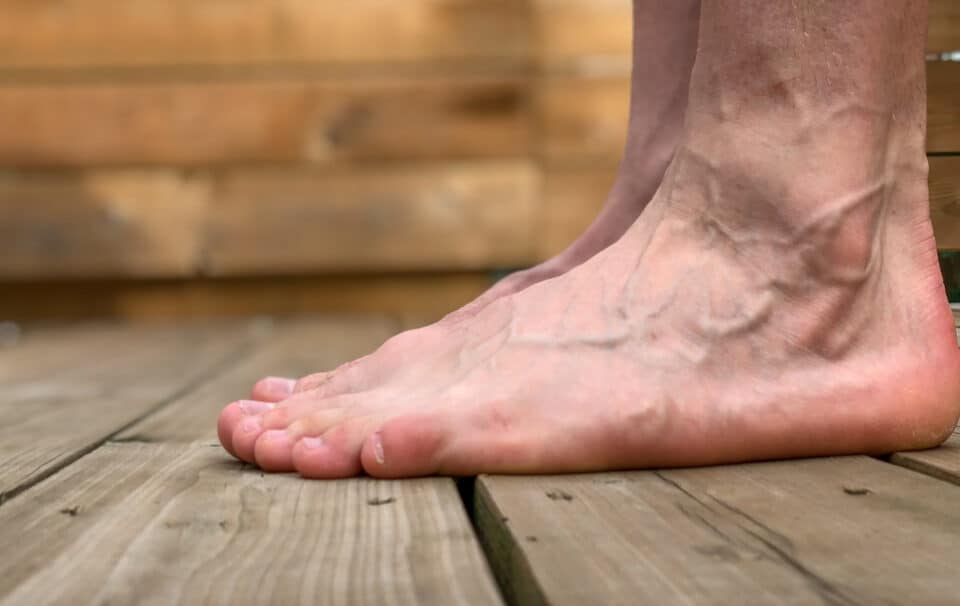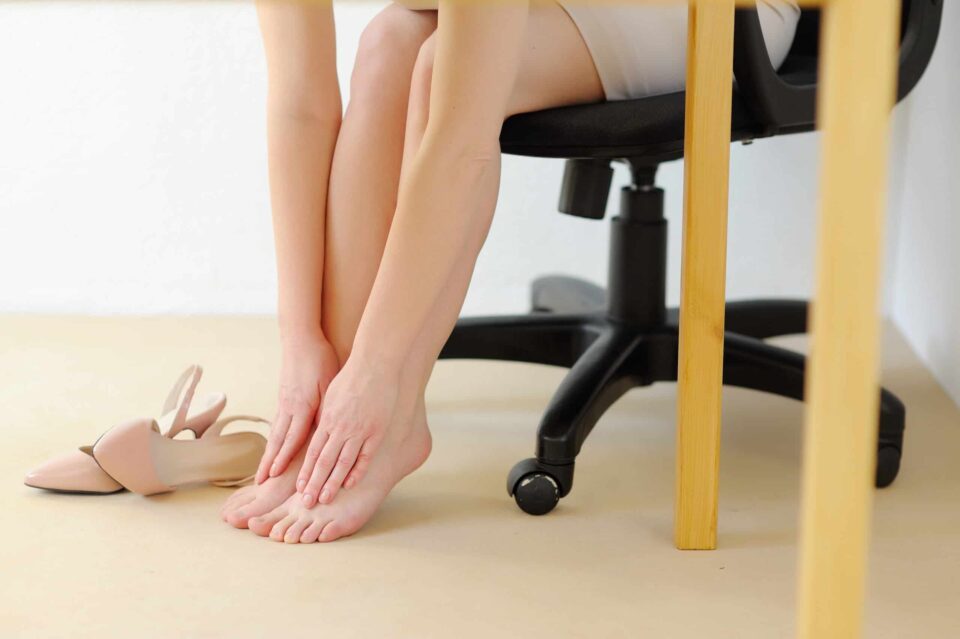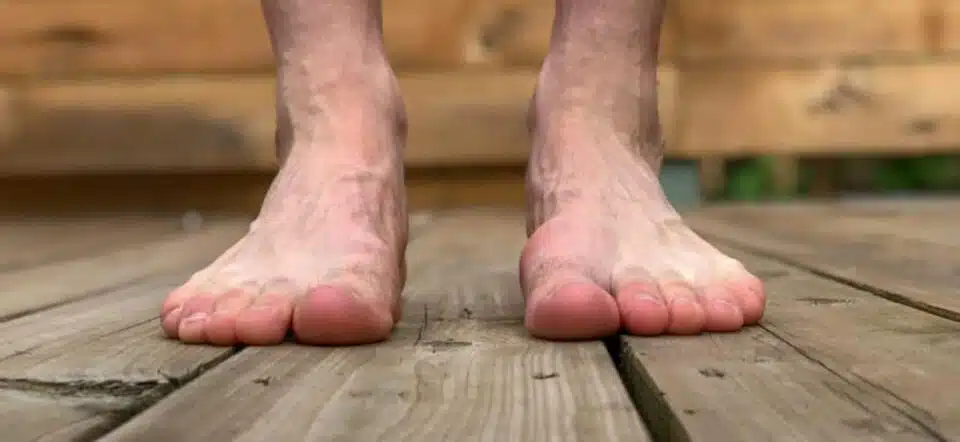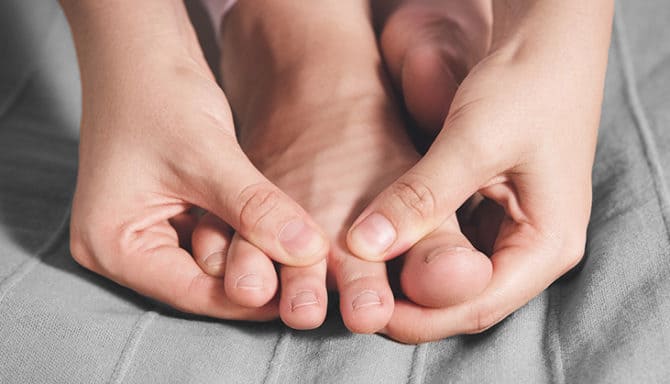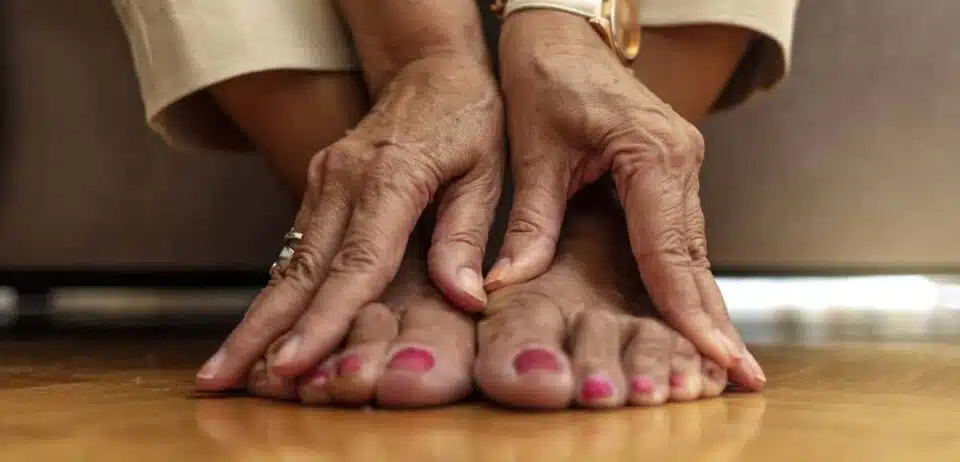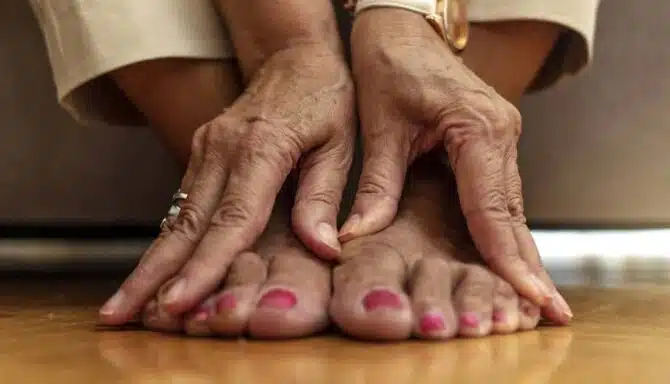Top of foot pain can be tricky since many muscles and tendons pass through the upper part of your foot. Plus, pain can be felt in multiple places. Top of foot pain can be localized towards your toes or uncomfortable closer to your ankle.
Fortunately, there are several effective remedies for top-of-foot pain, some of which can be done at home. There are also instances where seeing a specialist for a proper diagnosis and treatment plan is more appropriate. But first, reducing top-of-foot pain involves determining the underlying cause.
In this blog post, you’ll learn more about common causes of top-of-foot pain, potential remedies, and guidelines for consulting a specialist if necessary.
Causes of top of foot pain
Top of foot pain has several causes, from cracked bones to damaged tendons. Find a list of common causes of top of foot pain below.
Extensor tendonitis
Extensor tendonitis is inflammation of the extensor tendons, which helps lift your toes and support your ankle. When the extensor tendons are damaged, likely due to overstressing them, you may experience a flare-up of pain and discomfort.
Metatarsal stress fracture
Small cracks in the foot bones may be the cause of your pain. Stress fractures can stem from overuse or high-impact activities or could result from acute trauma, like if you dropped an object on your foot or stubbed the top part of your foot.
Sprained ligament
Overextending or tearing the ligaments supporting the top of the foot, usually from an injury or trauma, may cause top-of-foot pain.
Dorsal compression syndrome
Dorsal compression syndrome occurs when the nerves on the top of the foot are pinched. Typically, your nerves may pinch when your foot flattens (when your arch collapses or lowers to the ground), adding pressure to your bones and the top of the foot.
Arthritis
Osteoarthritis or rheumatoid arthritis can cause pain and inflammation in the joints of the foot. Osteoarthritis in the joints can also cause bone spurs on the top of the foot, namely the first metatarsophalangeal (MTP) joint.
Remedies for top-of-foot pain
Treatment for top-of-foot pain varies as discomfort may be isolated to 1-2 areas, or you may experience pain in a larger area of the foot. Treatment also depends on the cause, as well as for how long you’ve been experiencing symptoms. Remedies for top-of-foot pain include the following:
- Rest and ice: Reduce strenuous activities or anything that aggravates the top of your foot. If it hurts, you’re likely not making the condition any better. When you find pain subsides, ease back into activity accordingly, depending on the rest length. Add ice packs to the affected area for 10-15 minutes daily or until swelling and pain subside.
- Elevation: Elevate your foot above your heart (for instance, when lying down, elevate your feet above the level of your head) to reduce swelling and promote healing.
- Pain relief: Over-the-counter nonsteroidal anti-inflammatory drugs (NSAIDs) like ibuprofen can help alleviate pain and reduce inflammation.
- Supportive shoes: Invest in high-quality footwear made for your foot and its use. Shoes should provide adequate arch support, protection, as well as cushioning, and should accommodate your gait pattern and foot type. You should also wear specific shoes for the specific activity you’re doing when wearing the shoes.
- Custom orthotics: Custom orthotics or over-the-counter inserts can provide additional support and alleviate discomfort. Orthotics aims to correct common biomechanical issues like flat feet or high arches to better distribute weight across the foot.
- Gentle stretching: Light stretching and exercises improve flexibility, relieve tension, and promote better blood flow to the area.
When to see a specialist for top-of-foot pain
Proactively seeing a specialist when you experience pain is recommended. It’s challenging to replicate at home getting a proper diagnosis, determining the cause, and building a treatment plan like you would with a foot specialist.
However, not all conditions or pain require seeing a specialist. We recommend booking an appointment if you experience any of the following signs or symptoms:
- Sharp pain and swelling: If the pain is intense or accompanied by severe swelling, it’s advisable to consult a healthcare professional.
- Persistent symptoms: If you continue to experience symptoms like pain or discomfort and don’t see signs of improvement after a week, you may benefit from seeing a specialist.
- Difficulty walking: You may benefit from seeing a specialist if light activity or walking is unbearable.
- Traumatic injury: Getting evaluated is essential to rule out fractures or severe damage if the pain results from a specific injury or accident.
- Pre-existing conditions: If you have a history of foot problems or conditions like diabetes, it’s best to consult a specialist to ensure proper management.
